The Car that Started the Adelaide Legend
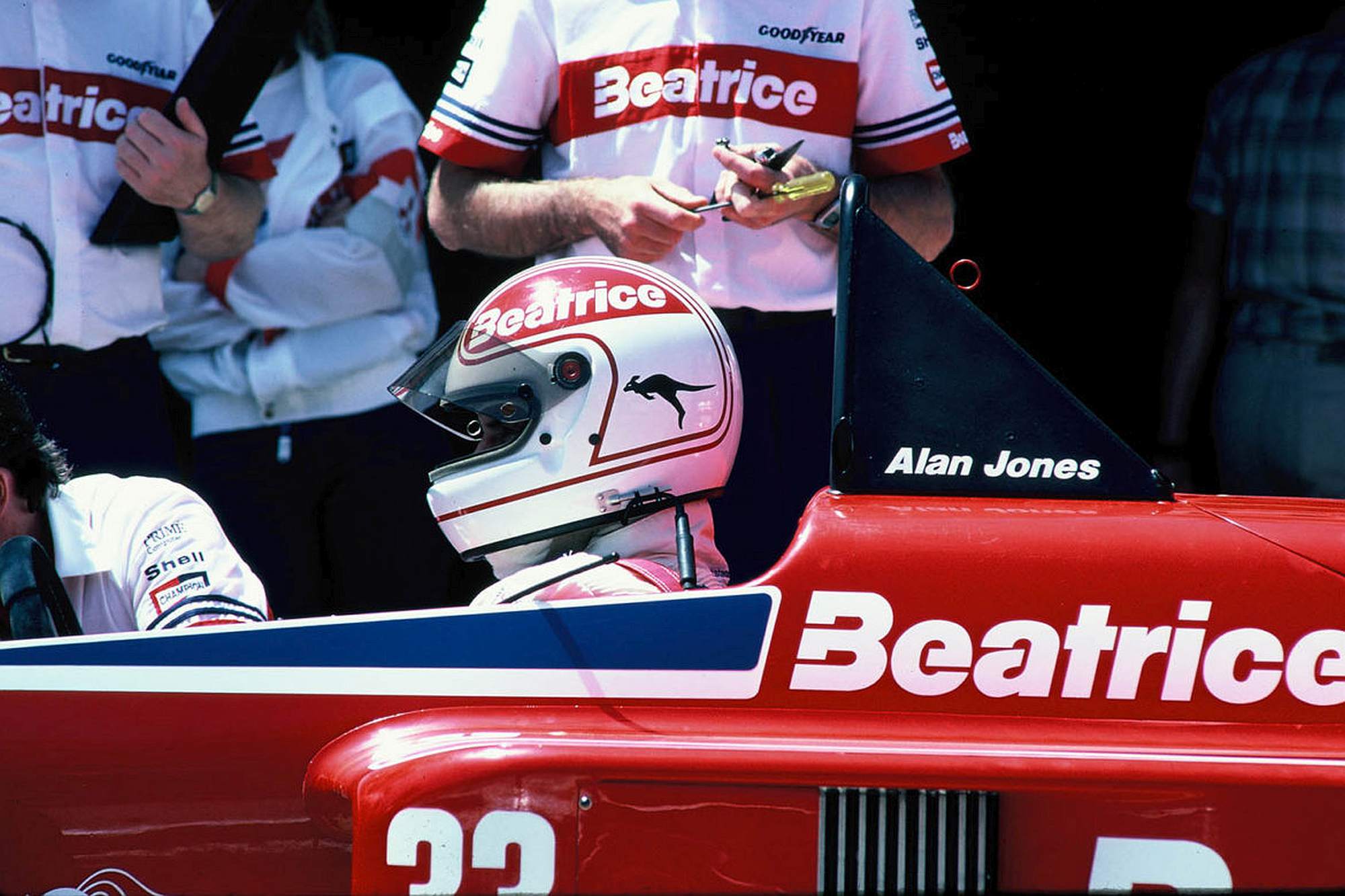
THE modern era of Grand Prix Racing in Australia started on November 1st, 1985, when 1980 World Driver’s Champion Alan Jones drove onto the Adelaide Parklands Circuit aboard his Beatrice Lola, kicking off the legend of the South Australian street circuit.
This is the story of the Lola THL1-Hart, of which an example resides in Australia.
HEADER IMAGE: Dale Rodgers
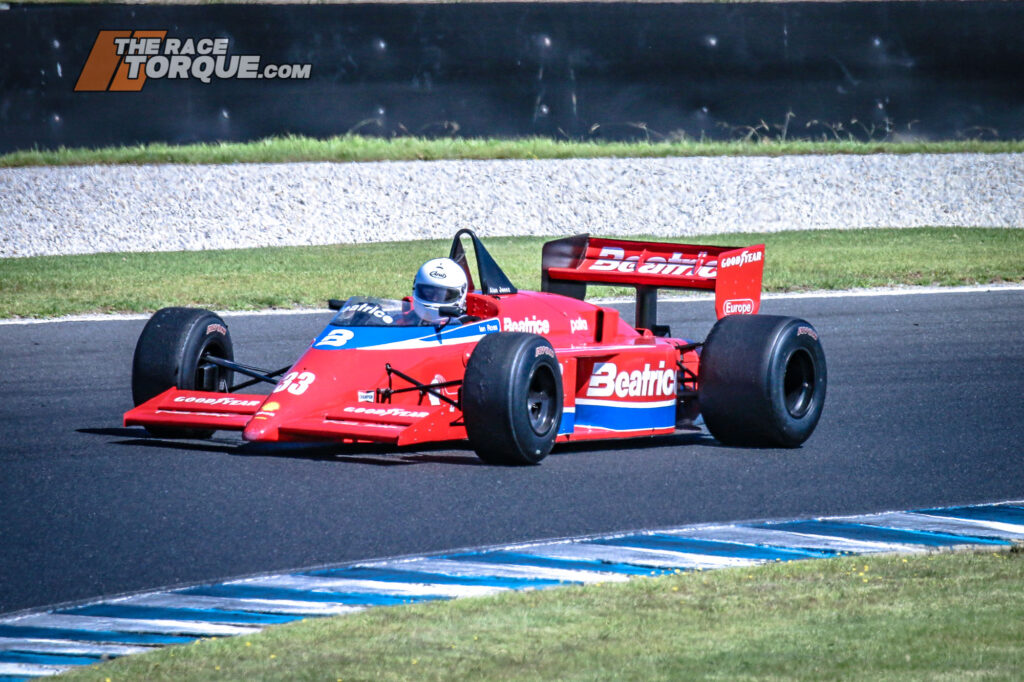
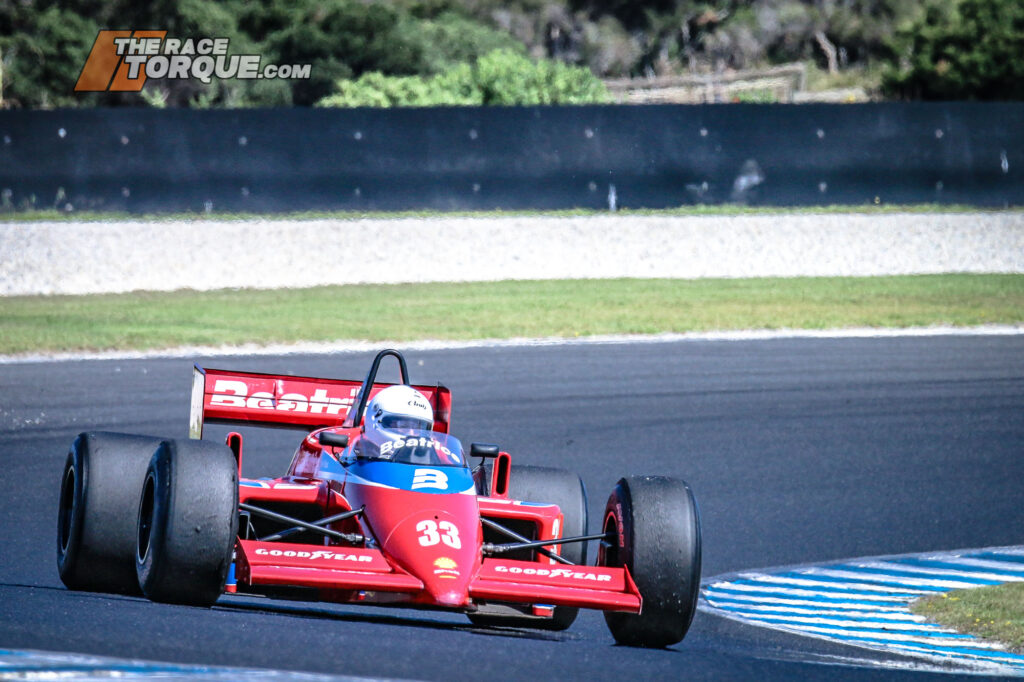

Beatrice Lola
The push into the USA by the GP circus is nothing new, with the 1980s featuring several American stops on the calendar.
Starting at Watkins Glen, other venues included Long Beach, Caesars Palace in Las Vegas, Detroit, Dallas and Phoenix.
The interest extended to sponsors too, with the US-based conglomerate Beatrice looking to activate upon a massive involvement in motorsport.
All told, the company owned roughly 200 brands globally across five continents – it was a major player in everyday life, although the overarching Beatrice brand received little recognition.
However, with the minor application of the Beatrice logo to its many varied products, the halo effect would draw together its interests, a program that kicked off with tie-ins with the Chicago Marathon and the 1984 Los Angeles Olympic Games.
Essentially, complimentary sub-brands around the globe could be united, for instance, Avis car rentals could cooperate with Samsonite luggage, with each stop on the F1 calendar enabling big promotional potential from differing angles.
Enter Carl Haas, the driving force behind the racing program, with the Beatrice backing also extending to the Newman-Haas Indycar of the legendary Mario Andretti, with that particular program ditching big-time sponsorship from Budweiser beer to represent Beatrice.
Haas enlisted two of the best in the business to head the F1 effort – Teddy Mayer and Tyler Alexander, formerly of McLaren.
Adding depth to the outfit were Neil Oatley (Technical Director) and John Baldwin (Chief Designer), who were joined by a young Ross Brawn (Head of Aerodynamics).
The next piece of the puzzle was Jones, who was lured out of retirement, while meetings were held with Ferrari, Porsche and Ford to find a suitable powerplant.
Ultimately, Ford saw the value of the American synergies of the program, and signed a three-year exclusive arrangement with the organisation.
However, the company would not have a solution ready until the start of 1986, with the development task delayed when its four-cylinder design was benched in favour of a bent six.
As a stop-gap, the team landed on Hart’s 415T, a four-cylinder 1.5L turbocharged unit, which elsewhere in 1985 had been utilised by minnows Skoal Bandit, Toleman and Spirit.
Hart’s crowning glory as an engine supplier came the previous year when Ayrton Senna finished his rookie F1 season ninth in the standings with podiums at Monaco, Brands Hatch and Estoril.
Patrick Tambay’s final foray aboard a Hart-powered Beatrice at San Marino in 1986 saw the fragile turbo rocket produce a reputed 750bhp at 11,000rpm.
After Beatrice’s move to Ford, Hart would tinker in the background before re-emerging in 1993 to power Jordan’s campaign.
The Beatrice Lola looked the part with sleek lines, and a design featuring a six-speed FORCE/Hewland transmission, double-wishbone suspension with a pushrod arrangement front and back, Koni dampers and Goodyear tyres.
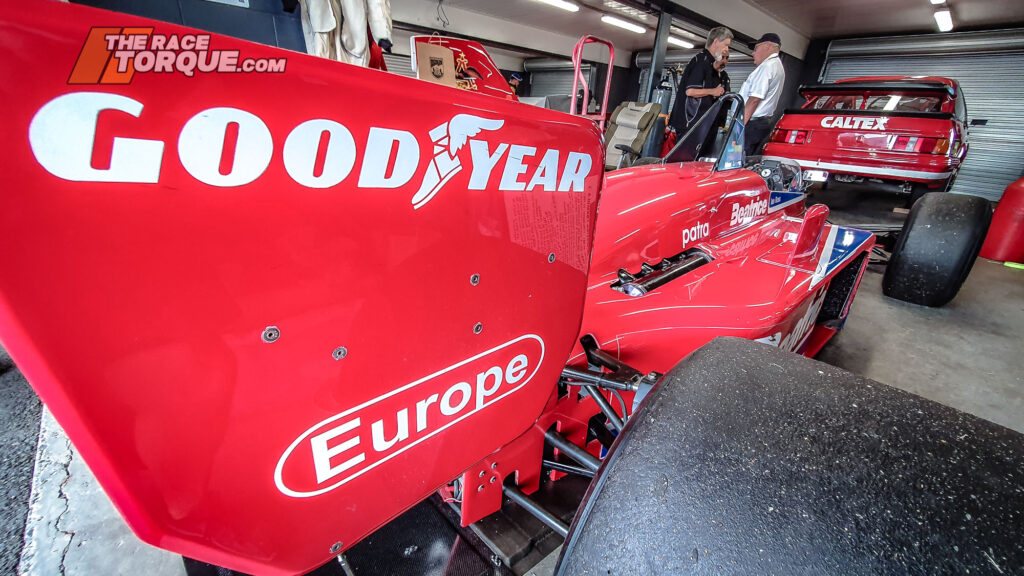
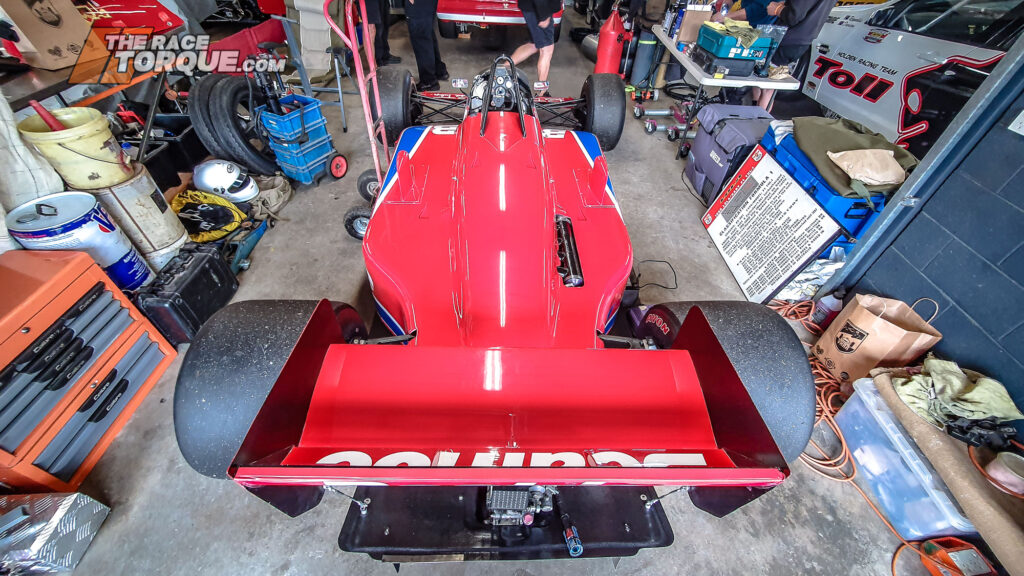

1985
The initial campaign for the squad was a tough one – Jones qualified 25th for the team’s opening race at Monza some 9sec off the pace after suffering overheating with one engine, a transmission failure with another, while the third dropped all of its oil.
On race day, Jones retired after only six circuits due to overheating and a failed distributor.
Next up was the European Grand Prix at Brands Hatch where Jones qualified 22nd, however, the car was similarly parked with a cooked motor after 13 laps.
Between those events, the team was prevented from running at the rescheduled race at Spa Francorchamps, after not being on the original entry list.
Initially scheduled for the start of June, that event was sensationally cancelled on the Saturday night of race weekend when the track’s new surface fell apart.
Next up on the agenda was the politically charged South African Grand Prix, where the Renault and Ligier teams boycotted the event in protest of that country’s apartheid policy.
Under pressure from forces within the USA, and following advisement from F1 supremo Bernie Ecclestone, Jones didn’t turn up to Kyalami on Saturday morning, and skipped the country.
In an effort to save face, the official storyline at the time was that the driver had been struck down by a virus, with reports at the time confirming that Jones had been struggling with the flu all week, despite being perfectly healthy…

Click here for the video news report from Jones hitting the track in Adelaide…
Moving on to the season finale at Adelaide, and Jones was the first to roll out onto the circuit for a demonstration lap as arranged by Ecclestone, to the protests of others.
After qualifying 19th aboard his Lola with tweaked aerodynamics in a bid to cure its understeer, Jones stalled at the start, and after giving away a significant margin thanks to a push start, he stormed through to sixth position when the electrics cried enough after 20 tours.
With the team expanding to two cars for 1986, and the Ford powerplant still not ready for use, the old THL-1 was wheeled out for the opening events, with Tambay registering the model’s only-ever finish, with eight at Jerez.

What’s in a Name, Anyways?
The cars and team were referred to as Beatrice Lolas, Haas Lolas and FORCE Lolas, although the team had no real connection to Eric Broadley’s Lola company, except for his long-standing North American export ties through Haas.
The cars were given the THL designation, with the acronym standing for Team Haas Lola, while they were produced by FORCE – Formula One Race Car Engineering Ltd, which was based at Colnbrook, near London’s Heathrow Airport.

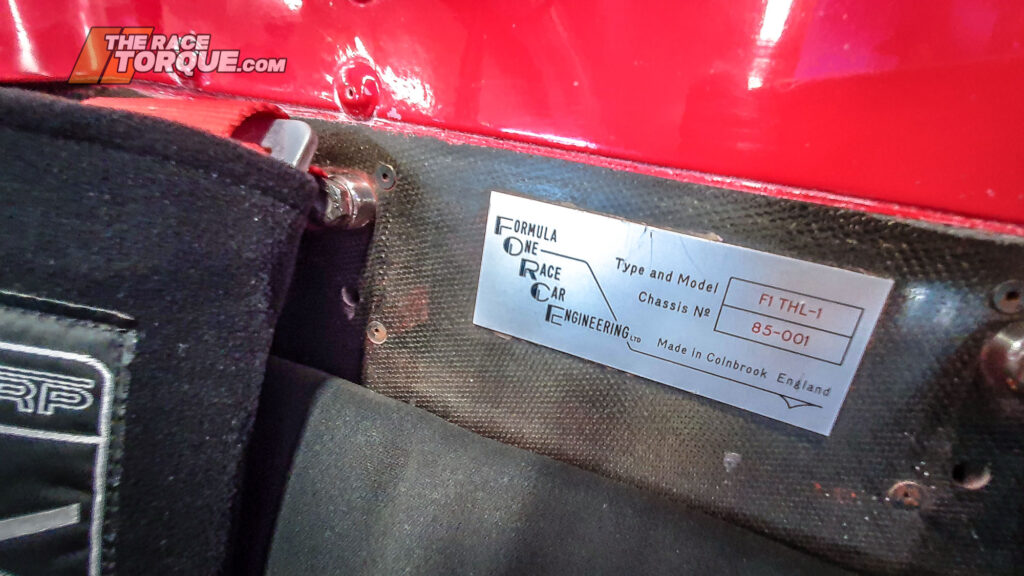

Chassis Files
Motorsport annual Autocourse noted that two of the THL-1 chassis were produced in 1985.
The published logbook stated:
001 – Spare car at Monza (raced by Jones), Brands Hatch (raced by Jones), Kyalami and Adelaide.
002 – For Jones at Monza, Brands Hatch, Kyalami and Adelaide.
In 1986, the subsequent publication noted:
001 – Spare car at Rio, Jerez and Imola.
002 – For Jones at Rio and Jerez. For Tambay at Imola.
003 – Not seen before. For Tambay at Rio and Jerez.
All told, five iterations of the second-generation THL-2 model were produced in 1986.
While helpful, it doesn’t exactly paint the picture of which chassis hit the Adelaide streets first.
Chassis 001, which now resides in Australia, was acquired by the Monteverdi Auto Museum Collection in Basel, Switzerland in 1987.
In 1997, it was picked up by Matthew Mortlock in the United Kingdom, who campaigned the car in the EuroBoss Masters Series through to 2002, before ownership was transferred to Bernie Harris.
Ian Ross imported the car to Australia in January 2004, with its CAMS logbook issued on the 14th of December, 2005, with the car subsequently being a star at major historic meets at venues such as Sydney Motorsport Park, Phillip Island and Mallala, plus specialist celebrations including Speed on Tweed and the Adelaide Motorsport Festival.



The Haas F1 Story Continued
The effort was over almost before it started.
Prior to the end of 1985, management changes at the top of Beatrice essentially doomed the program, and when the team failed to front for pre-1986 tyre testing in Brazil due to a lack of powerplants, the media whipped into a frenzy.
The team however continued on, with the long-awaited Ford power arriving for Jones from the third event in San Marino and for Tambay at Monaco, while in June, Adrian Newey joined the outfit from March.
Eventually, Beatrice Lola made the points three times, including fourth and fifth for Jones and Tambay in Austria.
Sadly for the team, in 1986, Beatrice was the subject of the largest leveraged buyout ever, with the US$8.7 billion deal seeing the various assets spun off over the following years.
Lacking sponsorship, the F1 program was a victim, with the team disbanding at the season’s end and the racing assets winding up in the hands of Ecclestone.
The Haas name would return to the F1 grid in 2016, although the current-day outfit is owned by Gene Haas, no relation of Carl.







